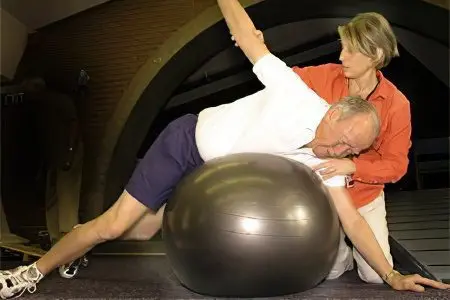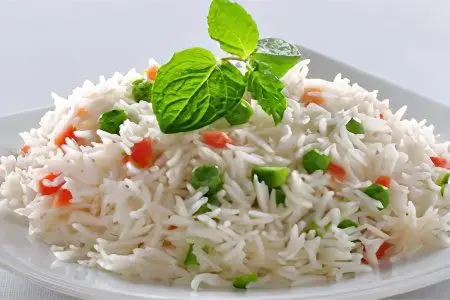Contents
- Step one: exercise
- Step Two: Special Diet
- 1 Sufficient protein intake
- 2 Preference for healthy carbohydrates
- 3 Antioxidants
- 4 Vitamins
- 5 Minerals
- 6 Polyunsaturated fatty acids omega-3 and omega-6
- 7 Alimentary fiber
- 8 Strengthening motor skills
- 9 Maintaining mental activity
- 10 The fight against constipation
- 11 Support of bone health
- 12 Facilitate the process of chewing and swallowing
- 13 Getting rid of chronic fatigue
- 14 Depression
- Step Three: Medications
People who have experienced Parkinson’s disease know that managing the symptoms of Parkinson’s is essential to maintaining quality and extending life. Moderate physical activity, the optimal content of nutrients in the diet and special medicines will help in this best of all. About all this further.
Step one: exercise
1 The benefits of physical activity in Parkinson’s disease are undeniable
Studies show that moderate exercise is most effective in combating the manifestations characteristic of shaking paralysis. They make it possible to optimize the stability of the body and coordination of the limbs, make a person stronger and have a positive effect on the recovery of the brain.
Other benefits of physical activity include:

Change in gait for the better;
Significant reduction in stiffness of ligaments and tendons;
Reducing the intensity of tremor and the frequency of spasms;
Strengthening the muscular corset and increasing endurance;
Ability to control tremors.
2 Physical activity has a positive effect on the level of dopamine in the blood
Regular exercise increases the efficiency with which this neurotransmitter moves through the cells of the human brain. The hormone dopamine additionally controls glutamate, a component that plays a critical role in transporting signals between brain cells.
3 The most optimal long-term exercise of moderate intensity
There is no need for people with Parkinson’s disease to run 40 km a week. It is better to replace crosses and marathons with simpler, leisurely activities. For example, work in the garden or daily morning and evening walks. This will be quite enough to improve the overall picture of the disease. Such activities also increase the heart rate to healthy levels.
Physical activity in Parkinson’s disease means:
Walking;
Jogging;
Cycling;
Rowing;
Swimming.
4 Swim as often as possible
This activity is exactly the kind of aerobic exercise that has a truly beneficial effect on the health of people who are faced with parkinsonism. When a person is in the water, there is no need to maintain the same enhanced control over the balance as on land. Feeling a kind of weightlessness will help the body relax – this is of paramount importance for Parkinson’s patients.
5 Try yoga
Hatha yoga, which involves the use of special asanas, or positions, has an extremely beneficial effect on the condition of people with Parkinson’s disease. Each of these asanas helps a person develop muscle strength and restore flexibility. In addition, yoga provides an excellent opportunity to concentrate on your own breathing, or pranayama.
In order to cope with the symptoms of parkinsonism, it is necessary to practice yoga asanas such as:
In order to restore energy balance: tadasana, uttanasana, virabhadrasana;
In order to develop and strengthen muscle strength: jathara parivartanasana;
For peace of mind: supta baddha konasana.
6 Do jaw exercises
Specific movements that tense the jaws, such as diligently chewing food of any consistency or practicing articulation (pronouncing each word with the most careful movement of the lips), are an ideal way to maintain facial muscles and maintain intelligible speech in Parkinson’s disease.
Step Two: Special Diet

Any nuances associated with the diet can have a significant impact on the manifestations of shaking paralysis. The following are dietary changes that are mandatory for people with Parkinson’s disease. This will help improve health and cope with the symptoms of the disease.
1 Sufficient protein intake
This component of food is one of the most necessary, because it plays a crucial role in the process of regeneration of body tissues. In addition, protein gives the body the opportunity to return to optimal physical shape. Proteins are involved in the regulation of such important functions as the work of the nervous, endocrine and immune systems.
The diet for Parkinson’s disease should include:
Rice (any type);
Beans;
Nuts;
Mushrooms;
Milk and dairy products;
Lean meat;
bird;
Fish and seafood.
2 Preference for healthy carbohydrates
The ideal way to recuperate is to eat foods high in complex carbohydrates. They are responsible for delivering energy to the body and optimize digestion. This component will be especially useful for those who have lost a lot of weight due to parkinsonism. Valuable carbohydrates should form the basis of the diet of such people.
The most “good” carbohydrates are found in foods such as:
Cereals: buckwheat, wheat, oatmeal, corn;
Beans: green peas, beans, lentils, chickpeas;
Vegetables: cabbage, carrots, onions, zucchini, pumpkin, turnips;
Fruits: peaches, oranges, bananas, apricots, kiwis;
Berries: raspberries, cherries, cranberries, wild strawberries, strawberries;
Dried fruits: raisins, dried apricots, prunes, apricots, candied fruits;
Whole grain bread and durum wheat pasta.
3 Antioxidants
These substances allow you to control oxidative processes and neutralize the damage caused by free radicals. It is the negative effect of the aging process on the cells responsible for the production of dopamine that is recognized as the main factor in the development of shaking paralysis.
Antioxidants can be obtained from the following foods:
Forest berries – blackberries, blueberries, blueberries, cranberries;
Fresh fruits – pomegranates, oranges, tangerines, plums;
Some vegetables – spinach, broccoli, red beans, carrots, tomatoes, garlic;
Green tea.
4 Vitamins
They are absolutely essential for the optimal functioning of the body.

People with Parkinson’s disease especially need the following vitamins:
B3, which ensures the normal functioning of the nervous system and enables the body to process carbohydrates, turning them into energy;
B12 – a substance that supports the healthy metabolism of any cells;
B1, or thiamine, which fights muscle atrophy, memory loss and changes in consciousness;
C, which helps strengthen the walls of blood vessels and fight infections;
E, provides protection to the tissues of the human body, is responsible for cell regeneration;
B6, makes it possible to fully absorb fats and proteins;
D, provides strong bones, helping to extract as much calcium as possible from food.
5 Minerals
There are micro and macro elements that must be consumed in order to fight the manifestations of Parkinson’s disease. They can be obtained from foods or dietary supplements.
List of the most important minerals:
Calcium necessary for maintaining the health and strength of bones, blood clotting and the smooth functioning of nerves and muscles. It is found in spinach, turnip and mustard (their leafy part), ordinary cabbage, tofu cheese, low-fat yogurt, sesame;
Hardware, which helps oxygen to be distributed throughout the body and produce energy. The component is found in foods such as spinach leaves, low-fat meats, whole wheat, soybeans, lentils, olives;
Phosphorus a serious role is also assigned, because it contributes to the accumulation and optimal use of energy. The substance is found in regular milk, seafood, cereals, cheeses, potatoes and legumes;
Magnesium responsible for muscle relaxation and energy distribution. It is recommended to additionally take it in the form of drugs (Asparkam, Panangin);
potassium helps to restore cells and tissues, improves nervous activity. It is found in oranges, bananas, dairy products, walnuts, apricots, kiwis, dried fruits, beans, sweet apples, broccoli, tomatoes, peas, seafood, meat and soybeans;
6 Polyunsaturated fatty acids omega-3 and omega-6
They are specific components that positively affect the functioning of the nervous system. They are found in olive oil, ocean fish and seafood;
7 Alimentary fiber
are equally important in improving digestion in Parkinson’s disease. Significant amounts are found in cabbage, fruit peels, nuts and kernels, oatmeal, beans, lentils, soy products, rice, and whole grain breads.
8 Strengthening motor skills
Walnuts are not only a wonderful food, but also an opportunity to support fine motor skills. They should be consumed every day. Another reason for the destabilization of motor skills in parkinsonism should be considered muscle weakness. It causes numbness in the limbs. To combat this manifestation, it is necessary to start taking vitamin B12 and phosphorus.
9 Maintaining mental activity
Bad fats of the “saturated” type, contained in red meat and pork, cause brain deterioration, memory impairment and clogging of blood vessels. Healthy unsaturated fats, such as those found in olive oil and nuts, on the contrary, have a positive effect on the nervous and cardiovascular systems.
Healthy fats are found in the following foods: hazelnuts, walnuts, cashews, peanuts, sunflower seeds, almonds, and pumpkin seeds. All of them are saturated with omega-3 and omega-6 acids, as well as folic acid, vitamins E and B6, thiamine and magnesium. They are extremely useful for human brain activity.
10 The fight against constipation
Constipation, or constipation, can be avoided by eating foods that contain vitamin B12 and dietary fiber. An equally important point is to increase fluid intake. Plant products (unlike animal products) contain a lot of dietary fiber that is not digested. This ensures a normal bowel movement.
11 Support of bone health
It can be not only maintained, but also improved by introducing sources of calcium, magnesium and vitamin D into the menu. Vitamins can be obtained simply by being in sunlight, rich in nutrients.
12 Facilitate the process of chewing and swallowing
Difficulty eating is another side effect of parkinsonism. This affects the state of health, because malnutrition can provoke a total weakening of health. It is possible to alleviate the patient’s condition if you prepare food for him that is soft in texture with a rich taste: fragrant puree soups, stewed vegetables, cereals and fruit purees.
Compared to meat, vegetables and fruits are chewed much faster. Especially when it’s cooked. They contain many useful vitamins and minerals even after heat treatment.
13 Getting rid of chronic fatigue
This is another symptom of trembling paralysis. Constant shivering provokes the loss of calories. This causes a feeling of fatigue. Of course, fatigue cannot be 100% eliminated, but it can be fought and controlled. To do this, you should eat foods that are saturated with phosphorus and catechins, such as green tea.
14 Depression
Foods that contain thiamine, folic acid, omega-3 and omega-6 fatty acids have a positive effect on mood and reduce the likelihood of developing a depressive state. Eating nuts and seeds optimizes the production of the amino acid tryptophan. It affects mood, feelings and behavior.
To prevent depression in Parkinson’s disease, you must:
Avoid foods and meals that contain a lot of sugar, because it provokes short-term energy bursts. They are inevitably followed by fatigue and nervous exhaustion;
Refuse alcohol, because it can provoke depression. In addition, with regular use of alcohol, the body loses its reserves of thiamine, zinc and other essential nutrients. All this happens as part of post-alcohol detoxification of the body.
Step Three: Medications
The combination of Levodopa and Carbidopa is one of the best strategies for treating Parkinson’s disease. Levodopa behaves like dopamine, which is important for brain activation. Carbidopa suspends the processing of Levodopa by the liver, thereby preventing negative effects (for example, nausea). In addition, the drug helps a significant amount of Levodopa reach the brain. Due to this, bradykinesia is removed, which allows the body, as well as the legs and arms, to increase flexibility and mobility.
Surgical intervention
This is also one of the ways to fight Parkinson’s disease. The need for surgery should be discussed with a specialist in advance, because it may not be suitable for a person for medical reasons.
There are two main types of interventions:
Ablation, in which the part of the brain affected by parkinsonism is identified and resected;
Deep stimulation, in which the doctor “turns off” that part of the brain that provokes trembling paralysis.
Osteopathic treatment
This is a special type of massage that relieves pain, reduces the stiffness of the tendons, and restores muscle and joint mobility. Osteopathic specialists use techniques such as correct tissue stretching, pressure orientation and resistance. All this makes it possible to significantly improve the well-being of people with Parkinson’s disease.
Before adopting any of the techniques presented here, you should consult with a specialist.









